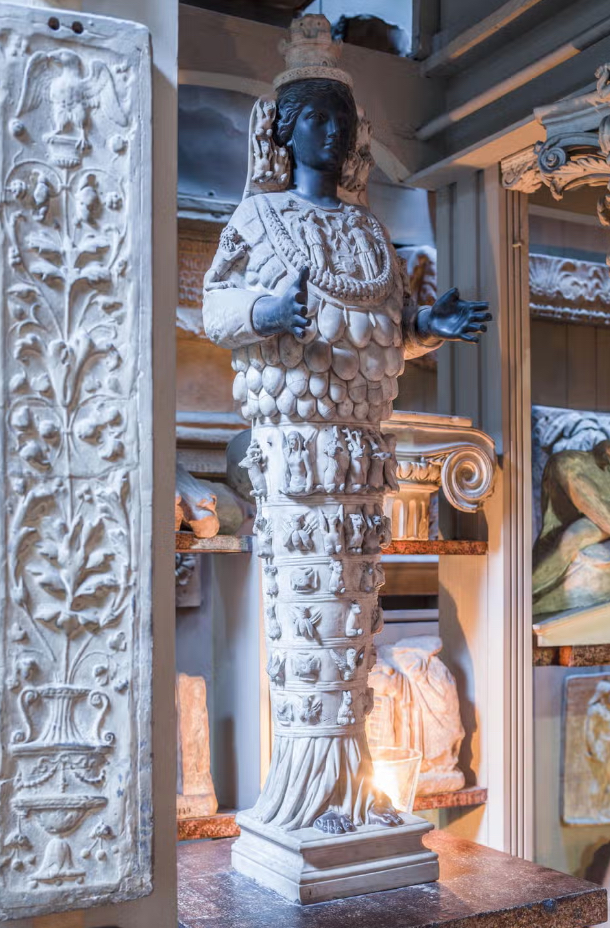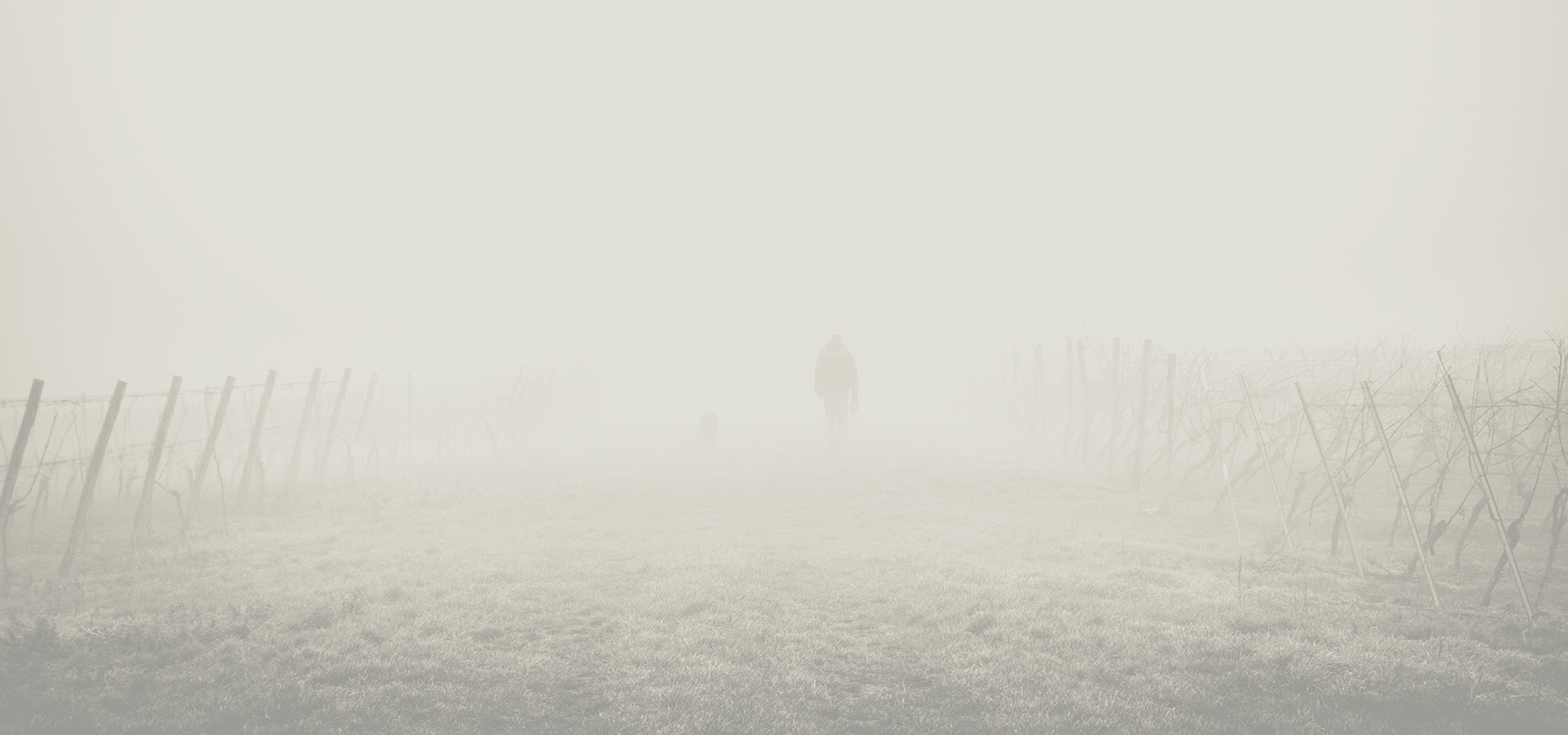
The head has a turreted crown and a nimbus on which appear protomai [the upper parts] of three griffins in a triangular arrangement either side of the head (all restored). Within the wreath of imortelles on the breastplate, a running bull (?: Thiersch calls it a stout, running boar) and a hare on the right (restored) above two standing Victoriae [Victory figures] (heads restored) holding a wreath between them with a crab below. On the arms, two lions sitting against the shoulders (only the feet, haunches, and ends of the tails of both are ancient). Below the stylised pendant necklace, composed of elongated double cones from which hang long 'acorn buds', all under the wreath, there are four rows of breasts, the ends of a number of which, especially near the front, are restored. Underneath the breasts, six rows of protomai separated by triple fillet moulding strips running around to each side. The single restored pieces are let into the torso separately, but the antique pieces were carved from the original block, a fact overlooked in previous descriptions. Since sections were cut out to let in the restorations, there were undoubtedly traces of the ancient protomai, as still remain in several cases, to guide the restorers in their work and produce results which, Thiersch noted, follow the established canon for Roman adaptations of the Artemis Ephesia. The figures top to bottom, left to right - that is the protomai in the ependytes [outer garments] between the hoop-fillet borders, are as follows: (an asterisk after the piece indicates the whole or an identifying part is ancient) 1. Stag; winged female (*); three stags; winged female (*); stag. 2. Griffin, bee (*); three griffins; bee (*); griffin. 3. Ram, rosette (*); two oxen; rosette; ram. 4. Hare (?); bee (*); roe; bee; hare (?). 5. Eagle; rosette (*); eagle; rosette (*); griffin. 6. Rosette (*); bee; hare; bee; rosette. The chiton (tunic) below the lowest zone, the feet, and plinth are, as indicated, all restorations. (There were originally 3 fingers of black marble from the Ephesian Artemis separately housed in the Soane Museum which might belong to the restorations (*), Museum no. X208. Two fingers are today in the collection (Library Drawer 106E). George Bailey (AB Inventory of works of art 1837) notes that fingers were 'put on the statue 1841'). In the sketchbook in Siena (at one time incorrectly associated with Baldassare Peruzzi) which appears to contain the notes of a young Italian architect, who was studying the antique in Rome after the middle of the Sixteenth Century, there is drawn a 'Diana Efesia', near sketches of the Theatre of Ferentum (Hermann Egger, Jahrbuch der Kunsthistorischen Sammlungen des Allerhöchsten Kaiserhauses, XXIII (1902) p.41; Folio.51, etc.). This drawing shows the Soane statue with its correct feet, its original, simple headdress, its old kalathos base, and the zones running around the front as in its present condition. The head, neck, and hands were already lacking. Egger noticed that the Siena sketchbook-Soane statue was drawn by J.J. Boissard (in Rome 1555-1561) in his Topographia Urbis Romae (1597-1602), IV, p.118, both with at least the present restorations about the feet and many imaginary alterations in keeping with the seventeenth century antiquarian engraving. He gave as provenance for the statue 'in hortis Carpensibus'. Thiersch identified the Soane statue, therefore, as being the 'Dea della natura' drawn by Ulisse Aldrovandi (Delle statue Antiche che per tutta Roma 295) in 1550 in Cardinal Rodolfo Pio's celebrated garden antiquarium on the Quirinal. In this celebrated forerunner of the later Roman collections of antiquities, the Soane statue was seen cleverly placed above the Portal which led to a marvellous elm-lined court - the Cortile dell'Olmo, (Christian Hülsen, Römische Antikengärten des XVI Jahrhunderts, Heidelberg Akademie 4, 1917. p.55, no.2).
Author: Roman, Sir John Soane's Museum Collection | Date: 1st Century, BCE

